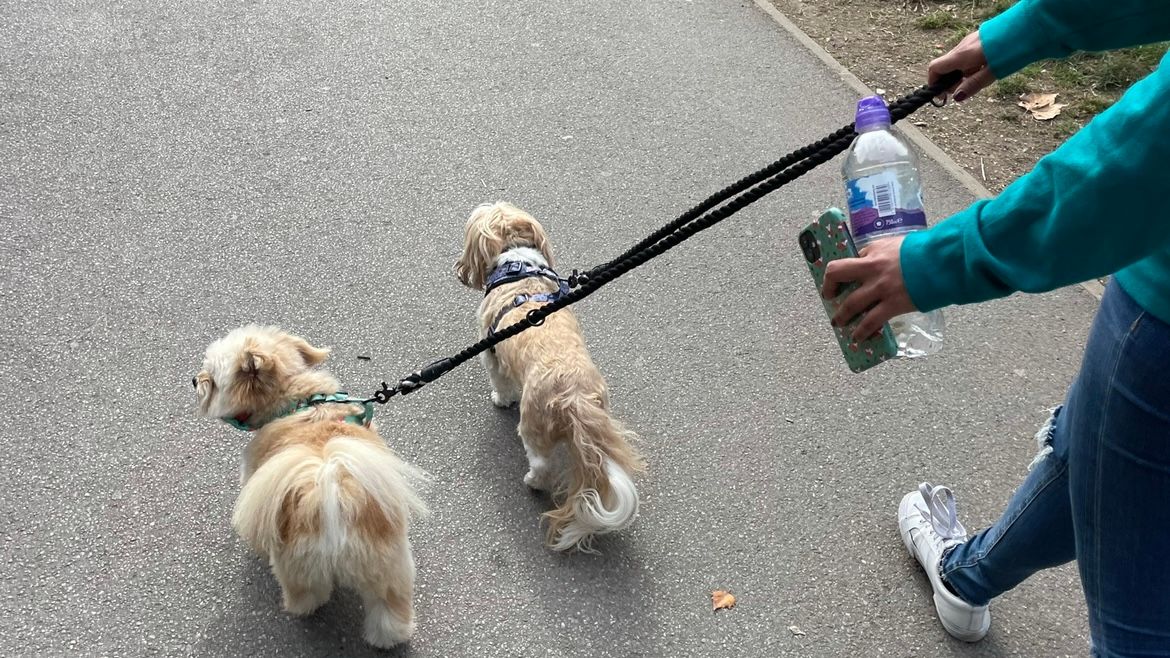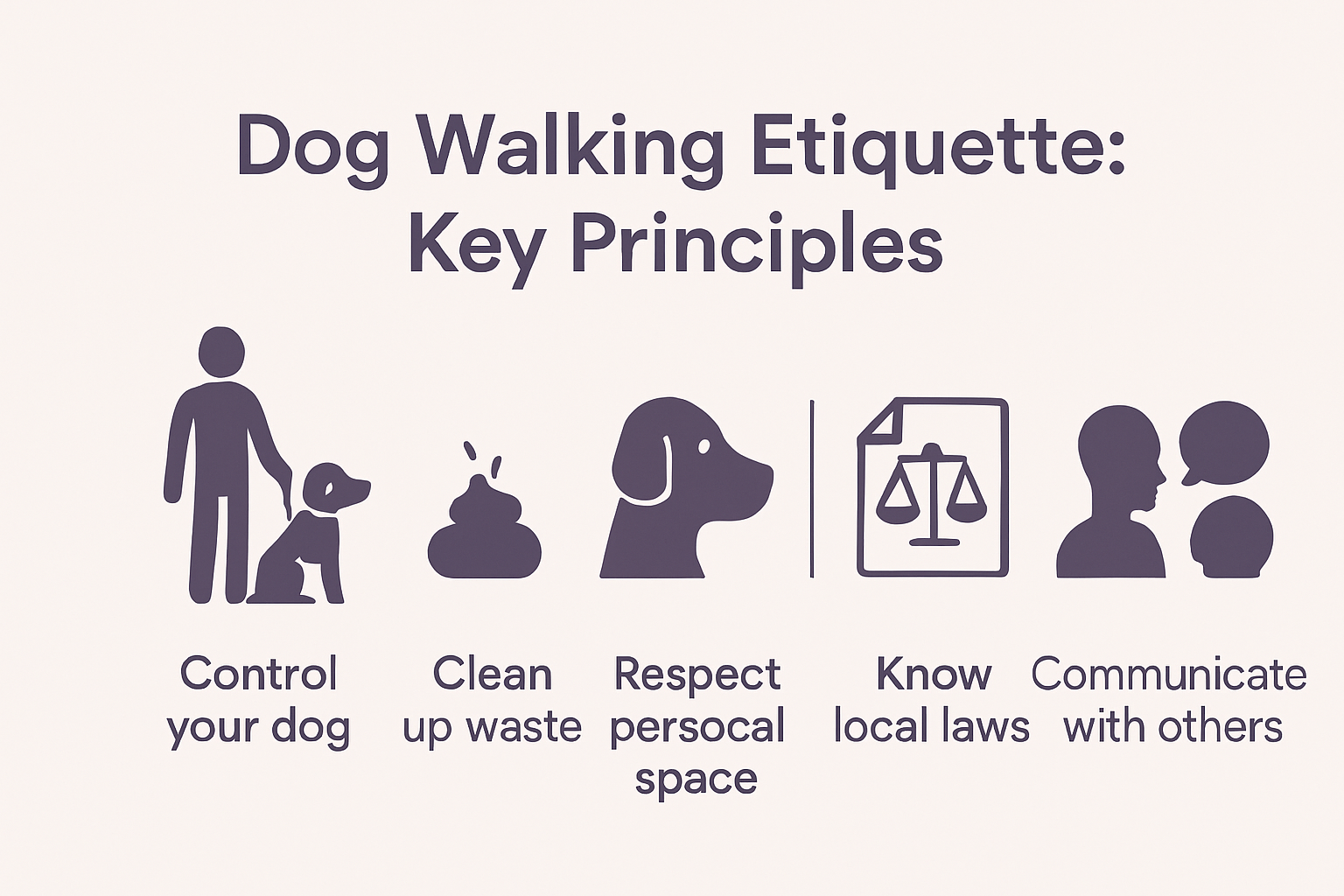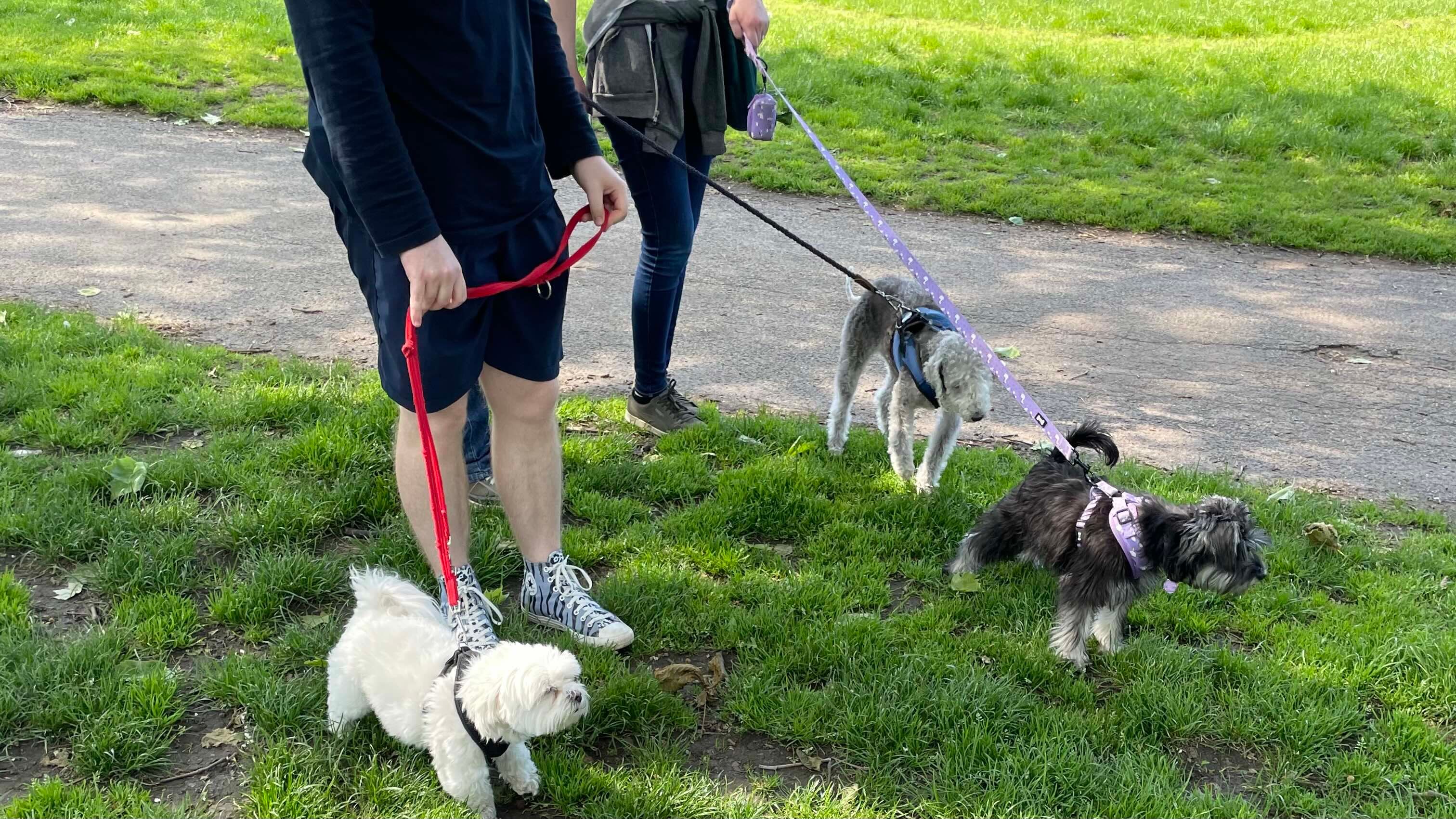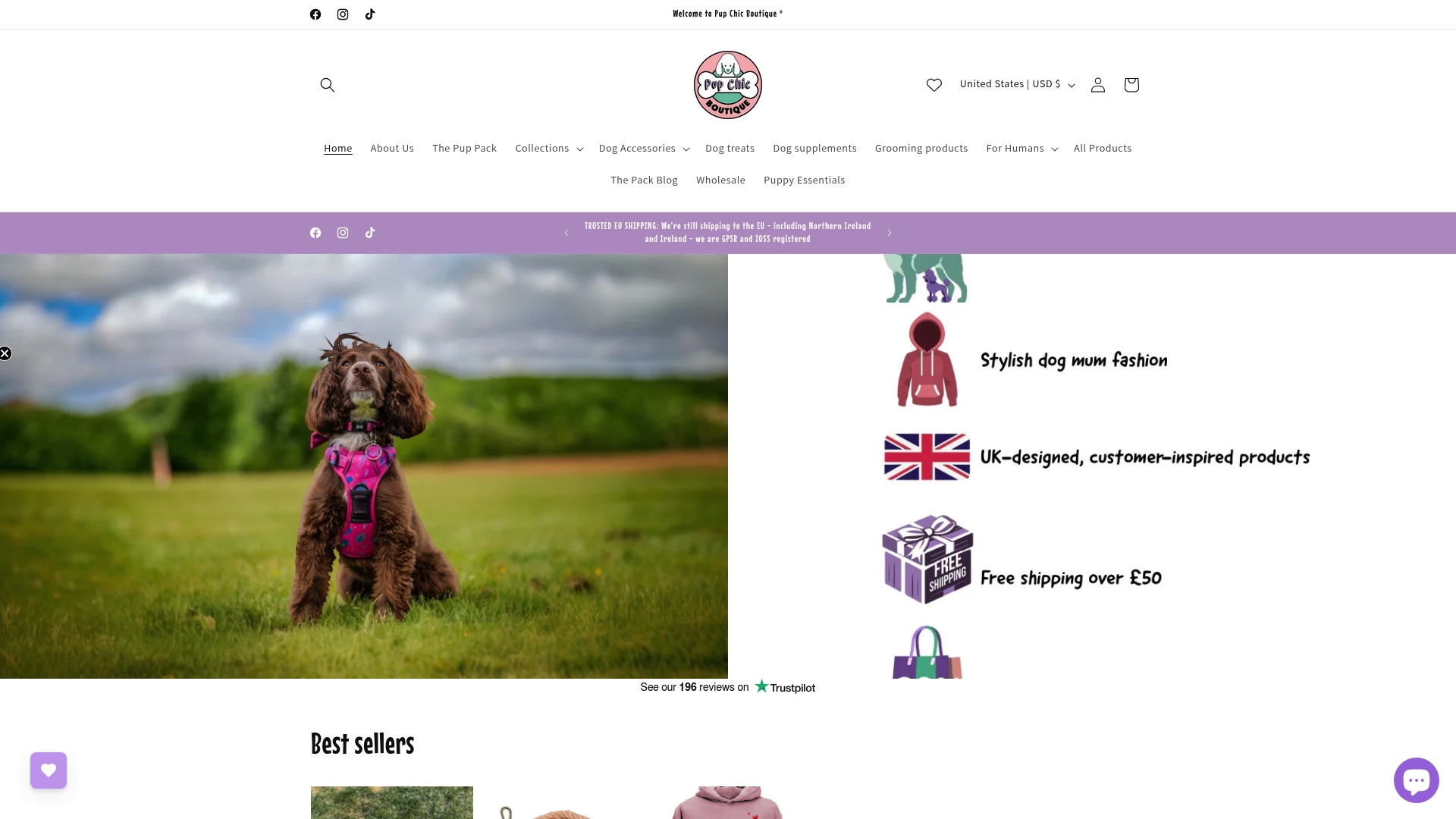Dog walking etiquette often gets brushed aside as common sense and yet it shapes every stroll you take outside. Studies show that even one careless dog owner can influence stricter public policies for everyone, shifting how whole communities view dogs and their people. What’s surprising is that the real impact stretches far beyond rules about leads and poo bags and becomes about building trust and harmony for people and pets at every step.

Table of Contents
Quick Summary
| Takeaway | Explanation |
| Control your dog at all times | Maintaining control prevents conflicts and ensures the safety of everyone in public spaces. |
| Clean up after your pet | Cleaning up waste demonstrates respect for shared environments and contributes to a positive community image. |
| Respect others’ personal space | Understanding and respecting boundaries helps create harmonious interactions between dog owners and non-dog owners. |
| Be aware of local regulations | Familiarising yourself with local laws regarding dog walking avoids penalties and fosters community trust. |
| Communicate effectively with others | Clear communication can prevent misunderstandings and facilitate smoother interactions between dogs and people. |

What is Dog Walking Etiquette and Why is it Important?
Dog walking etiquette represents a comprehensive set of social and behavioural guidelines that responsible dog owners follow when taking their canine companions out in public spaces. More than just a collection of rules, it reflects respect for other people, animals, and shared environments.
Understanding the Social Contract
At its core, dog walking etiquette is about creating harmonious interactions between dog owners, other pedestrians, wildlife, and public spaces. According to the Royal Society for the Prevention of Cruelty to Animals (RSPCA), responsible dog walking involves several key considerations:
-
Maintaining control of your dog at all times
-
Cleaning up after your pet
-
Respecting shared spaces and other people’s comfort
-
Understanding local regulations and restrictions
These guidelines are not arbitrary restrictions but essential social protocols that ensure safety and mutual respect. Proper dog walking etiquette prevents potential conflicts, reduces public nuisance, and helps create welcoming environments where dogs and humans can coexist peacefully.
The Broader Impact of Responsible Dog Walking
Beyond immediate social interactions, dog walking etiquette contributes to broader community well-being. When dog owners demonstrate considerate behaviour, they help build positive perceptions about dog ownership. This matters because public attitudes can influence local policies, access to public spaces, and societal acceptance of dogs.
Consider how one irresponsible dog owner can negatively impact entire community perceptions. A single uncontrolled dog, an uncleaned mess, or aggressive behaviour can reinforce negative stereotypes and potentially lead to more restrictive regulations for all dog owners.
Ultimately, dog walking etiquette is about recognising that public spaces are shared resources. By following these unwritten yet crucial social rules, dog owners demonstrate respect, responsibility, and consideration for their wider community.
Understanding the Social Impact of Dog Walking Etiquette
Dog walking etiquette extends far beyond individual interactions, representing a critical framework that shapes community dynamics, public perception, and social relationships between dog owners and non-dog owners.
Building Community Trust and Respect
Responsible dog walking practices are fundamental in establishing trust within shared public spaces. Research from the University of Cambridge highlights that considerate behaviour in communal areas directly influences community cohesion and interpersonal relationships.
Key elements that contribute to positive social interactions include:
-
Maintaining controlled and predictable dog behaviour
-
Respecting personal boundaries of other pedestrians
-
Demonstrating awareness and proactive management of potential disruptions
-
Showing genuine consideration for diverse community needs
Effective dog walking etiquette transforms public spaces from potential conflict zones into collaborative environments where different community members can coexist comfortably. This approach mitigates potential tensions and promotes mutual understanding.

Psychological and Emotional Dimensions
Beyond physical interactions, dog walking etiquette carries significant psychological implications. When dog owners demonstrate responsible behaviour, they challenge negative stereotypes and help reshape societal perceptions about dog ownership. This proactive approach can reduce anxiety among individuals who might feel uncomfortable around dogs.
Non-dog owners often form opinions about pet owners based on their public behaviour. A single negative encounter can reinforce existing prejudices, whereas consistent considerate actions can gradually transform community attitudes. By prioritising respect, communication, and empathy, dog owners become ambassadors for positive human-animal interactions.
Ultimately, dog walking etiquette represents a sophisticated social mechanism that balances individual freedom with collective responsibility. It requires ongoing mindfulness, adaptability, and a genuine commitment to creating inclusive, harmonious public spaces where both humans and dogs can thrive together.
Key Principles of Responsible Dog Walking
Responsible dog walking transcends simple physical exercise, embodying a holistic approach that prioritises safety, respect, and consideration for both the dog and the surrounding environment.
Control and Awareness
Maintaining absolute control of your dog is the fundamental cornerstone of responsible walking. According to the Los Angeles County Department of Animal Care and Control, this involves several critical strategies:
-
Using appropriate walking equipment like well-fitted harnesses
-
Practicing consistent obedience training
-
Understanding your dog’s individual behavioural triggers
-
Remaining fully attentive during walks
Control means anticipating potential interactions and preemptively managing your dog’s behaviour. This might involve crossing the street when encountering other dogs, keeping your pet close in crowded areas, or using verbal commands to redirect attention.
Environmental and Social Responsibility
Dog walking extends beyond personal convenience into a broader context of community and environmental stewardship. Responsible walking involves protecting both public spaces and the diverse inhabitants within them.
This means more than just picking up waste. It encompasses respecting wildlife habitats, minimising noise disturbances, and ensuring your dog does not disrupt other people’s activities or comfort. Different environments require nuanced approaches dogs might need to be leashed in busy urban areas, while rural paths might allow more freedom.
Consider the broader ecological impact of your walks. Stick to designated paths, avoid disturbing local wildlife, and be mindful of seasonal breeding or nesting periods. Your responsibility as a dog owner is not just to your pet, but to the entire ecosystem you traverse.
By embracing these principles, dog walking transforms from a routine activity into a mindful, respectful interaction with your environment and community. Each walk becomes an opportunity to demonstrate consideration, build positive relationships, and contribute to a harmonious shared space.
To clarify the key principles of responsible dog walking discussed in this guide, the following table summarises their main aspects and significance.
| Principle | Description | Example Action |
| Control and Awareness | Always keep your dog under control and stay attentive to their behaviour and surroundings. | Use a harness; practice obedience |
| Environmental Responsibility | Protect public spaces and wildlife, minimising disruptions and keeping the environment clean. | Pick up waste; stay on footpaths |
| Social Consideration | Respect other people’s boundaries and adapt walk strategies based on public setting and presence of others. | Avoid crowded areas; give space |
| Knowledge of Local Regulations | Be familiar with local rules that apply to dogs in public spaces to prevent issues and fines. | Follow leash laws; observe signage |
Navigating Public Spaces: Dog Walking Dos and Don’ts
Public spaces present complex social environments where responsible dog walking requires nuanced understanding, strategic behaviour, and proactive management of potential interactions and challenges.
Understanding Space Dynamics
Spatial awareness is crucial when walking dogs in shared environments. According to the ASPCA, navigating public spaces successfully involves comprehending unwritten social rules and potential interaction scenarios.
Key considerations for public space navigation include:
-
Recognising different comfort levels of people around you
-
Anticipating potential triggers for your dog
-
Understanding varying environmental contexts
-
Maintaining flexible and adaptive walking strategies
Each public space presents unique challenges. Urban pavements require different approaches compared to parks, countryside trails, or recreational areas. The ability to read and respond to environmental cues becomes a critical skill for responsible dog owners.
Interaction Protocol and Boundaries
Interactions with other people and animals demand careful, respectful management. Proactive communication and clear boundaries prevent misunderstandings and potential conflicts. This might involve verbally signalling your intentions to other pedestrians, maintaining appropriate physical distance, or quickly redirecting your dog’s attention.
When encountering other dogs, professional dog trainers recommend avoiding direct confrontational approaches. Instead, create controlled, calm interactions that prioritise both animals safety and comfort. This could mean crossing the street, changing walking pace, or using body language to communicate calm assertiveness.
Responsible dog walking in public spaces is not about rigid rules but about developing a sophisticated understanding of social dynamics. It requires continuous learning, empathy, and a commitment to creating positive experiences for everyone sharing the environment. By approaching each walk with mindfulness and respect, dog owners can transform potentially challenging interactions into opportunities for mutual understanding and community connection.
To provide a quick reference for dog owners, the table below compares appropriate and inappropriate behaviours when walking dogs in public spaces as highlighted in the etiquette guide.
| Do | Don’t |
| Keep dog under control | Let dog off-lead where not permitted |
| Clean up after your pet | Leave waste in shared areas |
| Respect others’ personal space | Allow dog to approach without consent |
| Communicate with other owners | Assume all dogs want to interact |
| Be aware of local regulations | Ignore posted signs and rules |
| Stay attentive to surroundings | Use phone and get distracted |
Fostering Positive Interactions with Other Dogs and Owners
Successful dog walking extends beyond individual control, encompassing a sophisticated understanding of canine social dynamics and human interpersonal communication. Navigating these interactions requires emotional intelligence, practical skills, and genuine respect.
Reading Canine Social Signals
Understanding dog body language is fundamental to creating safe, positive interactions. According to the ASPCA, successful dog interactions depend on recognising and responding to subtle communication cues:
-
Observing tail positioning and movement
-
Monitoring ear and body posture
-
Recognising signs of stress or discomfort
-
Interpreting different vocalisations
Each dog communicates uniquely, with individual temperaments and past experiences shaping their interaction styles. Experienced dog owners learn to distinguish between playful curiosity and potential aggression, allowing them to intervene proactively and prevent potential conflicts.
Human Communication and Consent
Positive interactions begin with human communication. Before allowing dogs to meet, owners must establish clear, respectful dialogue. This involves asking permission, discussing each dog’s temperament, and being prepared to separate animals if necessary.
Consent and controlled introductions are critical. Not all dogs enjoy immediate, direct interactions. Some may feel anxious or territorial, requiring gradual, carefully managed meetings. Owners must remain attentive, ready to redirect or separate dogs if tension emerges.
Consider the walking environment, time of day, and each dog’s energy levels. A quiet park might facilitate smoother interactions compared to a busy, stimulating urban street. Patience, observation, and mutual respect transform potential challenges into opportunities for positive socialization.
Fostering positive interactions is an ongoing learning process. By approaching each encounter with empathy, awareness, and a commitment to mutual understanding, dog owners can create supportive, enjoyable experiences for both their pets and fellow community members.
Make Every Walk Effortless and Chic With the Right Accessories
Understanding dog walking etiquette is the first step to becoming a more considerate pet owner. Yet, even the best intentions can fall short if your lead pulls, your harness chafes, or you feel unprepared for unexpected encounters on your daily strolls. If you want to enjoy true control, comfort, and style while practising all the responsible behaviours outlined in this guide, you need accessories designed with modern challenges in mind.

Upgrade your walks today and see how the right equipment can transform every outing. From no-pull harnesses and hands-free leads that keep your dog close in busy environments, to matching apparel that shows off your shared flair, Pup Chic Boutique offers solutions inspired by real dog mums across the UK. Ready to walk with confidence and harmony? Visit our homepage now and discover practical accessories that make following dog walking etiquette easy and enjoyable. Your next unforgettable walk begins with a single click.
Frequently Asked Questions
What is dog walking etiquette?
Dog walking etiquette encompasses the social and behavioural guidelines that responsible dog owners should follow when walking their dogs in public spaces. It promotes respect for other people, animals, and the environment.
Why is it important to follow dog walking etiquette?
Following dog walking etiquette is crucial as it helps prevent conflicts, reduces public nuisance, and fosters positive perceptions of dog ownership in the community, ensuring a harmonious environment for both dogs and humans.
How can I maintain control of my dog while walking?
To maintain control, use appropriate walking equipment like a well-fitted harness, practice obedience training regularly, and stay attentive to your dog’s behaviour and surroundings, allowing you to anticipate and manage potential interactions.
What should I do if my dog encounters another dog while walking?
When encountering another dog, maintain a calm approach. Avoid direct confrontations by either crossing the street or steering your dog away. Always communicate with the other dog owner to ensure both dogs are comfortable before allowing any interaction.




